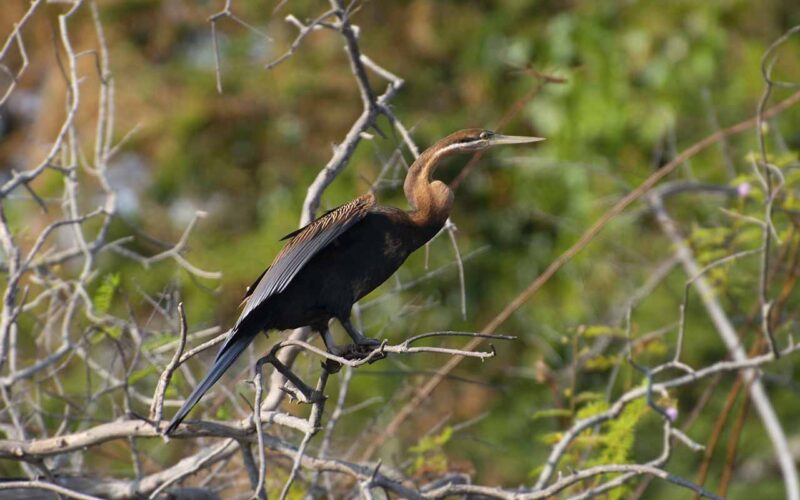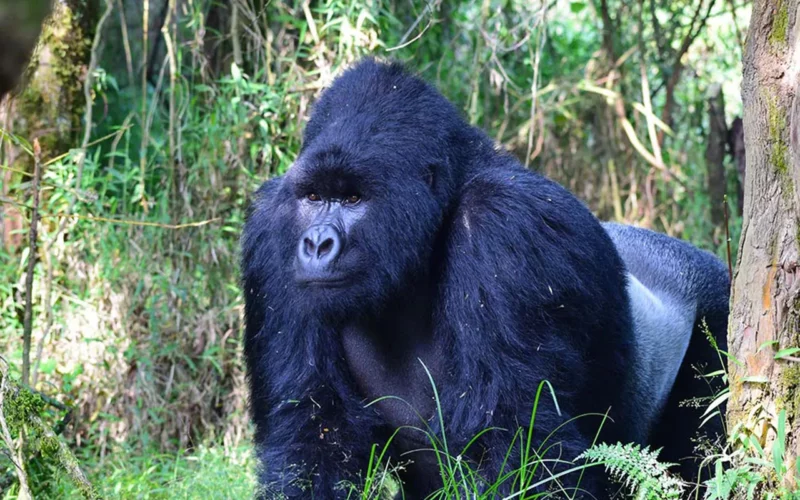Planning a Rwanda birding tour, here is our recommendations on best hotspots, best time and hands-on tips to inspire you as you plan your trip. Although Rwanda is popular for its excellent and incredible mountain gorilla and the chimpanzee trekking experience in their montane rainforest homes, it offers the best montane birding experience unmatched in the region.
Covering an area of just 26,340 km 2, Rwanda sits high elevated between 1500m-2500m at the heart of the Albertine Rift Endemic area, Africa’s most biological hotspot. The endemic area of Albertine Rift is a top birding hotspot covering the country’s western region where habitats include ancient rainforests, montane ranges, high-altitude swamps and wetlands. Rwanda’s eastern region consists of expansive savanna plains, wetlands dotted with lakes and wooded grasslands. The country’s high altitude, excellent all-year-round equatorial weather, compactness and great infrastructure linking top birding sites, makes birding here easy and rewarding.

Where to go birding in Rwanda – Top Birding Hotspots
Rwanda protects a wide diversity of bird-rich habitats including Africa’s bird-rich biomes that converge here boasting a incredible 750 bird species checklist. These continental biomes/habitats include the Albertine Rift Endemic Zone which includes the ancient montane forests and rainforests, extensive savanna woodlands, high-altitude swamps and the extensive Akagera Wetlands also the largest wetland in East Africa. Birding in Rwanda occurs anywhere including city green parks, restored wetlands and hillsides making this small country a top birding destination.
These varied Rwanda’s bird-rich habitats are protected areas as national parks and reserves whereas some are designated as Important Bird Areas (IBA) and Ramsar sites due to their biodiversity importance.
Below are Rwanda’s top birding hotspots.
- Nyungwe Forest National Park is Rwanda’s top birding hotspot offering the best montane birding expereince. This oldest montane forest on the continent lies at the heart of the great Albertine Rift known for its high diversity endemism. Nyungwe Forest boasts an incredible checklist of over 320 species comprising up to 29 Albertine endemics and a quality montane specialists. Nyungwe Forest is highly accessible with a great network of birding trails, excellent guides and a wide range of accommodations. A tailored specialist birding tour to exploit Nyungwe’s diversity require up three days excursion.
- Gishwati-Mukura NP: Lying north of Nyungwe Forest, Rwanda’s new national park offers excellent birding. A large section of the park is a regenerating forest hosting several usually shy and skulking high-altitude specialists.
- Volcanoes National Park within the Virunga massifs is another birding hotspot hosting a variety of Albertine Rift Endemics and restricted range specialists.
- Along the country’s east is the low-lying Akagera National Park, Rwanda’s biggest and only savanna park, that protect a rich mosaic of habitats hosting up to 500 bird species. Of these habitats, is the extensive wetland system fed by the Kagera river that host various Lake Victoria biome-restricted and water associated specialists. The savanna woodlands and grasslands are rich with a variety of species of interest notably the East Africa’s endemic; the Red-faced Barbet and a variety of southern Africa specialists at their northern-range limit here.
- Elsewhere across Rwanda, extensive wetlands are protected as Important Bird Areas (IBA) and Ramsar sites hosting a wide range of specialists from Lake Victoria biome to high-altitude marsh species. These bird-rich wetlands include Rugezi Wetlands in the north of the country and Bugesera Wetlands both reliable birding sites for the skulking Albertine Endemic Grauer’s Swamp Warbler, White-winged Swamp Warbler and the rare Papyrus Yellow Warbler among others.
- Kigali City offers an exciting urban birding expereince across the city’s numerous green parks, golf fields, lagoons, hotel gardens and eco-centers. Meanwhile just anywhere across this highly cultivated terraced highland country any small patch of forest and garden provides excellent birding opportunities.
Planning a Rwanda Birding Trip – What to Consider, Tips and Recommendations
- Trip Duration and Birding Sites to Visit
For most visiting birdwatchers to Rwanda, the major highlight and target are the Albertine Endemics in the country’s montane forests that within the Albertine Rift Endemic zone along the western region of the country. These high-altitude and ancient montane forests are the oldest on the continent hosting up to 29 Albertine Rift species restricted to this endemic zone and a rich checklist of afro-montane highland species.
Visiting birdwatchers with the experience of East African birds, might want to concentrate more in these high-altitude montane rainforests spread across the Albertine Rift zone. Our short birding plan of 8-Days concentrates and focuses on the local endemics and afro-highland specialists restricted in these montane ranges.
Our recommended birding duration for first time visiting birders to Rwanda would be an average of up to 2-weeks, to be able to explore the bird-rich birding sites spread across the country. Here is look at our tailored and well paced 13-Day Rwanda Birding and Primates Tour that offers a rewarding birding experiences.

- Consider other adds-on experiences Offers including Gorilla/Chimpanzee Tracking, Wildlife and Culture Experience
On planning a Rwanda Birding trip, it is easy to tailored the country’s most premier attractions – a trek expereince to encounter the mountain gorillas, golden monkey and chimpanzee in their natural habitats.
And although you will be birding in the same montane habitats as these man’s closest cousins, a trekking adventure to encounter them is an independent expereince that require special permits. Permits to these lifetime experiences are a high demand and must be booked and paid for well in advance to enable plan well.
Other activities that can be tailored in your birding tour include cultural tours that offer you a peek into Rwanda’s heritage, city tours, cycling, canopy walks, volcano hikes and adventurers on the scenic Lake Kivu.
While birding in the expansive savanna park of Akagera NP, you will get excellent wildlife views and photographic opportunities of the local game including several of the Africa’s Big 5 list that occur in here, whereas on a boat cruise on Lake Ihema you will come into close quarters of the semi-aquatic Hippo schools and Nile Crocodile.
- Consider the Best season to travel to Rwanda
Rwanda’s tropical climate makes it an all-year birding destination however there are regional variations according to local topography and altitude; in general, the country has got wet/dry seasons. March-May and Oct-Nov are wet seasons, while the dry spells come in from June to September and late Dec-Feb. The highlands in the country’s west and central receives more rains than the low-lying areas in the south-east and eastern regions of Rwanda.
- Do homework from regional Bird Field Guidebooks to generate a wish-list
Before you travel, spare some time to a homework about the regional sightings and generate a wish-list of species to see on a trip. This you can share with your bird guide to have a more species-target-driven birding tour. Excellent field guide including Birds of East Africa by John Fanshawe and T. Stevenson will help you familiarize yourself with local varieties. Other field guides like Birds of Africa, by Sinclair and co is also a good start. These and more have downloadable apps that come with call recordings.
The popular e-bird is a great resource to find local sightings in particular birding sites you intend to visit.
- Consider the Package Price
When you have set yourself ready for that planned Rwanda Birding trip, browse for various packages offered by local/regional operators and that’s where it gets tricky! Take note here, detailed write ups and species highlights mentioned in those packages usually indicates local knowledge and expertise of the operator. The overall package price however will come down to your planned birding duration, quality of bird guide, transport and personal comfort.
Rwanda is a well serviced destination with variety of accommodation plans ranging from super luxury to comfortable mid-range properties. The road network connecting birding sites is excellent although Akagera NP in the east retains that typical African wilderness feel that require a 4WD to explore well.
Finally, Don’t break the bank…!!
Take note of cheap packages, they look too-good-to-be true…and there are exaggerated packages too! Birding brings a difference to these ecosystems and improve communities that protect them. It should be rewarding, affordable and sustainable!
Packing essentials for a Rwanda birding Tour
Once set, it’s time to park. A full parking list for your Rwanda Birding safari must include your usual birding gear, binoculars and possibly a camera with spare batteries along with;
- A hat and sunscreen for the scorching sun
- Sunglasses
- A warm jacket or sweater for those evenings while in high altitude areas!
- Good walking shoes for forest birding
- Rain gear
- Water Bottle
